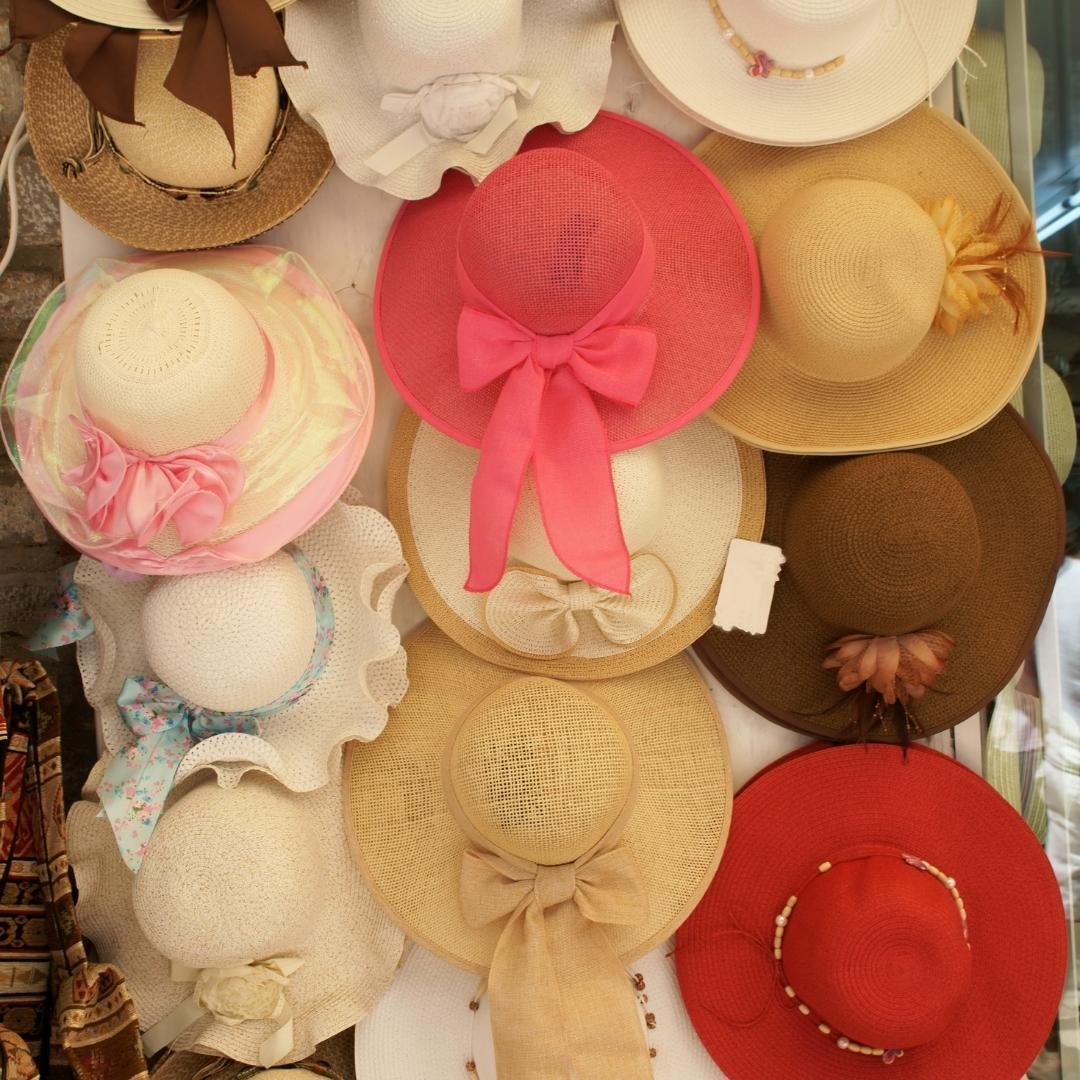Repurpose a vintage hat
As I was decluttering last week, I contemplated on a few old hats I bought at an estate sale with the hope of giving it a new life. I’ll buy almost any piece made out of parasisal straw or fine velour or fur felt. Vintage hats are often made with high quality materials that are now long gone. Older straw weaves were so fine it looked waterproof. Quality old hats are difficult to ascertain in the US. I think it’s because hats fell out of fashion starting around the 1970s, so the number of available vintage pieces have become scarce, driving up the prices for old hats in need of repair.
I removed the hat trim and binding from the old estate pieces to see if I could repurpose the base material. I was surprised that most everything was glued rather than hand stitched. The result were bits of tacky glue in spots of the straw. I was able to pick most of it off, leaving some discoloration. Even though the straw quality looked fine, I had mistakenly purchased poorly made hats.
Customers sometimes ask me whether I can repair or refurbish their vintage hats, and my answer is always a big “maybe.” If the hat predates the 1970s, then yes I possibly could. Chances for repair increase if the hat was made in the United Kingdom or Australia where pieces are still made traditionally. If you are considering purchasing a vintage hat, inspect it carefully for holes, deep creases in the straw, and tears on the main body and crown areas. Be sure to look inside as well. Check if trim and ribbons are glued on rather than hand sewn. When I see a good body, I know at the very least I could use that as a foundation for a new design. Making new hats out of old was my first millinery lesson. My former textiles instructor, who was also a milliner explained “re-blocking” to me before I ever made a hat. That was more than 35 years ago, and wisdom still fresh like yesterday.
Quick note about wool hats. I don’t purchase any wool felt hats used unless they are practically given away. I personally don’t like blocking with wool felt or care for the feel of them. I use them as sample blocks and maybe as padding, but rarely for an actual hat. Look for the soft, smooth velvety fur felt hats. Nab those if they are in excellent condition. A new felt fur hood base will cost at least $60-120 USD each. Now you know why quality hats are so expensive. I wouldn’t really pay much more than $30-35 for a fur felt in good condition, and even less for straw. Look for tight woven pieces called parasisal straw or Panama. Please avoid sinamay hats, and loosely woven pieces. I also look for larger hats with a brim so I have more material to work with.
Here’s a couple of tricks I use to clean hats, whether it’s your own or one you want to repurpose. I dust the hat with a brush to get as much dirt and debris as possible, then carefully remove the trim. If it’s glued on, you can loosen it with a little heat from a hair dryer and gently peal it off. If it’s stitched, use a pair of small sharp embroidery scissors to snip the threads. I have used a seam ripper, but you have to be careful with either tool. Do not snip the hat straw, do not pull the trim too hard. If there is make up around the hat, try to clean it off with a baby wipe or a gentle cloth. I have used mild soap to try to clean makeup. This is probably a good time to wipe the whole hat clean. I have gone as far as quickly rinsing straw to clean it, but I don’t recommend it unless the straw is in very good condition. Water weakens straw and fur felt.
Feel free to contact me if you have a vintage hat that’s sentimental, and you want to up-cycle into a new design. Many folks tell me how they have saved their grandmother’s hats, but they don’t really wear them. Why not? There’s probably some real gems out there.


